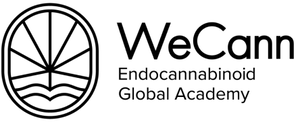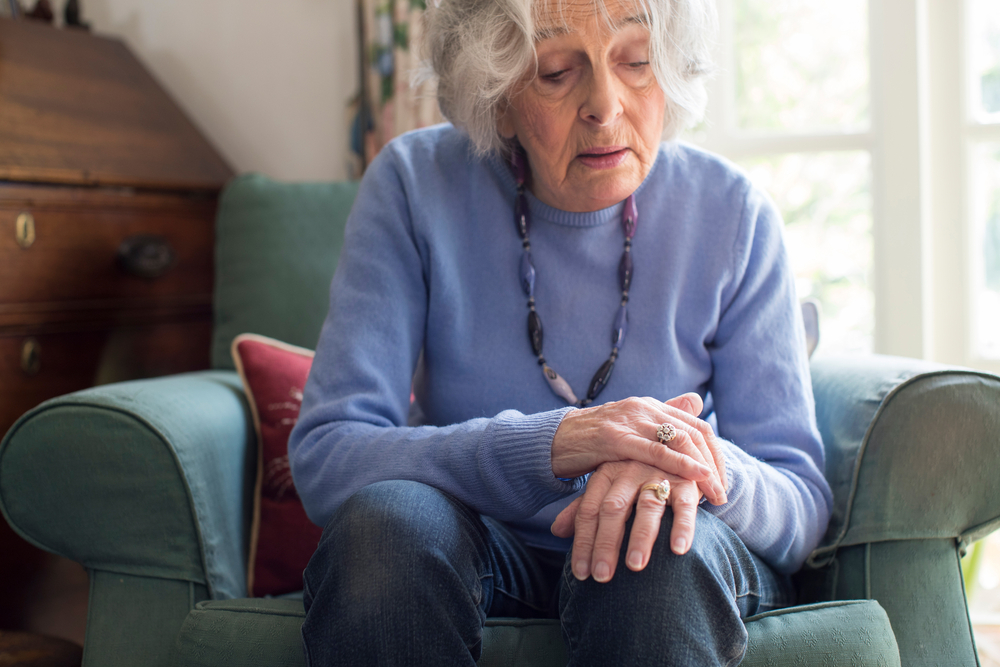Breast cancer is the second most common cancer in the world and the leading cause of cancer death in women. Each year, 2.3 million women are affected by the disease, according to data from National Cancer Institute (INCA).
With the expansion of research on Endocannabinoid System and the regulation of the medicinal use of Cannabis in more than 40 countriesthis therapy has been consolidated as promising adjuvants in the treatment of several diseases, including cancer.
The relationship between cannabis and breast cancer is established in the relief of symptoms resulting from the disease, and in the antitumor potential of cannabinoids as adjuvant therapy –, which still needs more robust clinical scientific evidence.
Read it to the end to learn about studies on how medicinal cannabis can provide better quality of life for cancer patients and what are the prospects regarding the antineoplastic potential of cannabinoids in breast cancer.
Cannabis as Adjunctive Therapy in Breast Cancer
A significant and growing proportion of cancer patients are turning to cannabis for therapeutic help. An American research published in Journal of Clinical Oncology (2020) showed that, of 725 725 patients with breast cancer, 42% used Medicinal Cannabis as adjuvant therapy.
Users reported use to fight effects of chemotherapy – pain, nausea, inappetence – and alleviating those symptoms resulting from the disease itself, such as anxiety (57%), stress (51%) and insomnia (70%).
>> Access the complete study here: A survey of cannabis use for symptom palliation in breast cancer patients by age and stage.
In the study, the average age of respondents is 57 years, and 85% have non-metastatic disease. However, Cannabis has been consolidating itself as a valuable therapeutic agent also in metastasis, alleviating the physical, emotional and psychological suffering we observe in these patients.
Below, we list the main benefits of Cannabis in both contexts.
Relief of neuropathic pain
Surgical procedures, radiotherapy and especially chemotherapy can cause neuropathic pain in women with breast cancer. In many cases, conventional therapy consisting of antidepressants, anticonvulsants and opioids does not have the expected analgesic efficacy, in addition to causing undesirable side effects
Cannabinoid derivatives can provide very positive responses in the levels of perception of these pains. Preclinical studies and literature reviews show that, despite not “zeroing” pain perception, cannabinoids can considerably increase the level of tolerance of patients to pain.
>> Read this study: Cannabidiol inhibits paclitaxel-induced neuropathic pain through 5-HT(1A) receptors without diminishing nervous system function or chemotherapy efficacy
>> Read this review: A selective review of medical cannabis in cancer pain management
Cannabis may be helpful in other types of cancer pain, such as bone pain resulting from metastases, as shown in this study published in The Journal of Pharmacology and Experimental Therapeutics..
>> Access here the full articles to learn more about the Endocannabinoid System and the action of cannabinoids in alleviating cancer pain.
Controlling nausea and vomiting
The antiemetic potential is another therapeutic property of cannabinoids that can be explored in the context of patients undergoing radiotherapy and chemotherapy.
Patients who do not respond well to conventional antiemetics may present quite satisfactory responses when taking cannabinoids for this purpose, especially extracts predominant in the THC.
Appetite stimulation
THC may take a prominent position in the adjuvant treatment of cancer patients due to its potential to stimulate appetite.
A North American study conducted with 252 oncologists – published in Journal of Clinical Oncology – shows that 65% of these professionals consider cannabis as or more effective than conventional treatments for anorexia and cachexia.
>> Access the full article here: Medical Oncologists’ Beliefs, Practices, and Knowledge Regarding Marijuana Used Therapeutically: A Nationally Representative Survey Study.
Anxiety Reduction
Anxiety and depression are common in cancer patients, especially those in palliative care. The mood-modulating potential of cannabinoids has been widely explored in this regard, improving the quality of life of those in deep psychological distress. The positive psychoactive exploration of THC allows everyday experiences such as eating, listening to music or watching a movie to become more pleasurable and enriching.
Improved sleep pattern
Insomnia is another disorder often associated with cancer patients. Here, THC is highlighted for its sleep-inducing potential. With gradual improvement in sleep pattern, it is possible to progressively weaning from benzodiazepines, drugs commonly used for this purpose and associated with important adverse effects in the medium and long term.
Learn more about the therapeutic properties of THC, read our article Medicinal attributes of THC: learn about its therapeutic properties and understand why this cannabinoid can be a valuable resource in medical practice.
Anti-Tumor Potential of Cannabis in Breast Cancer
Literature reviews suggest that cannabinoids are able to inhibit the proliferation, adhesion, migration, invasion, and angiogenesis of tumor cells, including breast cancer cells.
In preclinical studies, cannabinoid CB1 and CB2 receptor agonists, such as the endocannabinoid anandamide and the phytocannabinoid THC, have been shown to inhibit the proliferation of breast cancer cell lines that express estrogen receptors (ER+).
>> Learn more here: Cannabinoids and Hormone Receptor-Positive Breast Cancer Treatment
This study compared the antitumor efficacy of THC alone with that of a complete THC-rich plant extract. The complete THC-rich plant extract was more potent than THC alone in producing antitumor responses in cell cultures and animal models of ER+/PR+, HER2+ and triple-negative breast cancer.
>> Access the study here: Appraising the “entourage effect”: Antitumor action of a pure cannabinoid versus a botanical drug preparation in preclinical models of breast cancer
As evidenced in this nestudy published in 2020 in the Journal of Biomolecular Structure and Dynamics, which pointed out an important antitumor activity of THC in breast and prostate tumors.
The aforementioned study demonstrated that THC can increase the expression of the estrogen receptor beta (ERβ), which is a breast cell protein capable of suppressing the uncontrolled proliferation of cancer cells induced by estrogen. This other study, published in 2021, shows similar results, also from in vitro perspective, however, evidencing the antineoplastic potential of in vitro, porém, evidenciando o potencial antineoplásico do CBD.
> Access the full articles here:
Insight of druggable cannabinoids against estrogen receptor β in breast cancer.
Although cannabinoid therapy is a promising adjuvant in cancer treatment, it is important to emphasize that it does not replace chemotherapy drugs and oncologic therapeutic protocols e protocolos terapêuticos oncológicos. It works, therefore, as ancillary therapy, helping to restore the quality of life and well-being of patients in this context.
Despite many promising preclinical studies, we must emphasize that there are still important gaps in the scientific literature on cannabis and breast cancer regarding the antineoplastic potential of said substance.
On the other hand, the potential of medicinal cannabis in reducing symptoms associated with cancer, such as nausea, inappetence, anxiety, insomnia, and neuropathic pain, and in improving the quality of life of cancer patients in general, is undeniable.
A Specialized education na área é indispensável para atuar com segurança e eficácia na prática prescritiva. Prescrever derivados canabinoides demanda conhecimento diferenciado e aprofundado, para modular potenciais efeitos adversos e otimizar resultados terapêuticos. Pensando nesta preocupação, desenvolvemos um guia em formato de e-book trazendo informações sobre como dosar os dois fitocanabinoides cientificamente mais explorados e utilizados até o momento, o tetrahidrocanabinol (THC) e o canabidiol (CBD).
The WeCann Academy is committed to this learning journey through its International Certification in Endocannabinoid Medicine.
We connect experts from around the world in a global Endocannabinoid System study community to bridge scientific knowledge and practical experience in the medical use of Cannabis.
Would you like to join us? Contact us and get ready for this new frontier of Medicine!
References
Amaral C, Trouille FM, Almeida CF, Correia-da-Silva G, Teixeira N. Unveiling the mechanism of action behind the anti-cancer properties of cannabinoids in ER+ breast cancer cells: Impact on aromatase and steroid receptors. J Steroid Biochem Mol Biol. 2021.
Borštnar S, Debeljak N, Dobovišek L, Krstanovic F. Cannabinoids and Hormone Receptor-Positive Breast Cancer Treatment. 2020.
Bhattacharjee A, Hossain MU, Chowdhury ZM, Rahman SMA, Bhuyan ZA, Salimullah M, Keya CA. Insight of druggable cannabinoids against estrogen receptor β in breast cancer. J Biomol Struct Dyn. 2021.
Braun IM, Wright A, Peteet J, Meyer FL, Yuppa DP, Bolcic-Jankovic D, LeBlanc J, Chang Y, Yu L, Nayak MM, Tulsky JA, Suzuki J, Nabati L, Campbell EG. Medical Oncologists’ Beliefs, Practices, and Knowledge Regarding Marijuana Used Therapeutically: A Nationally Representative Survey Study. J Clin Oncol. 2018.
Munson AE, Harris LS, Friedman MA, Dewey WL, Carchman RA. Antineoplastic activity of cannabinoids. J Natl Cancer Inst. 1975.
Smith LA, Azariah F, Lavender VT, Stoner NS, Bettiol S. Cannabinoids for nausea and vomiting in adults with cancer receiving chemotherapy. Cochrane Database Syst Rev. 2015.
Thompson AL, Grenald SA, Ciccone HA, BassiriRad N, Niphakis MJ, Cravatt BF, Largent-Milnes TM, Vanderah TW. The Endocannabinoid System Alleviates Pain in a Murine Model of Cancer-Induced Bone Pain. J Pharmacol Exp Ther. 2020.





